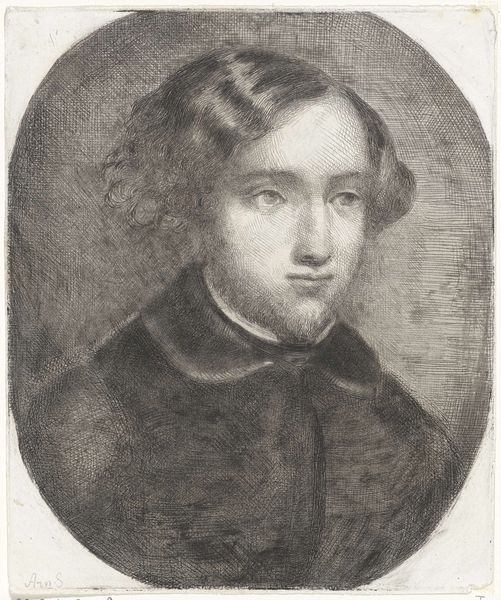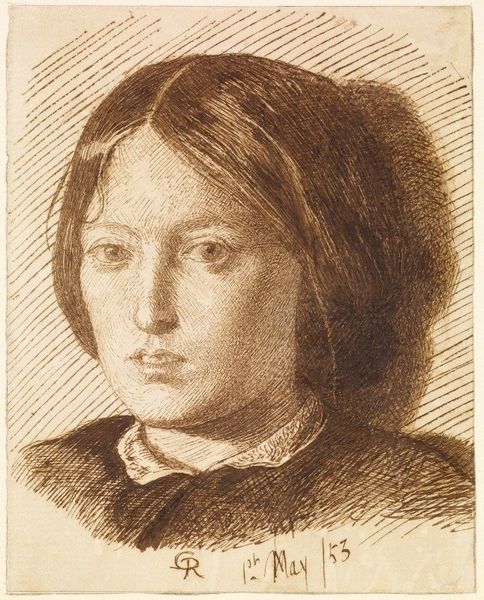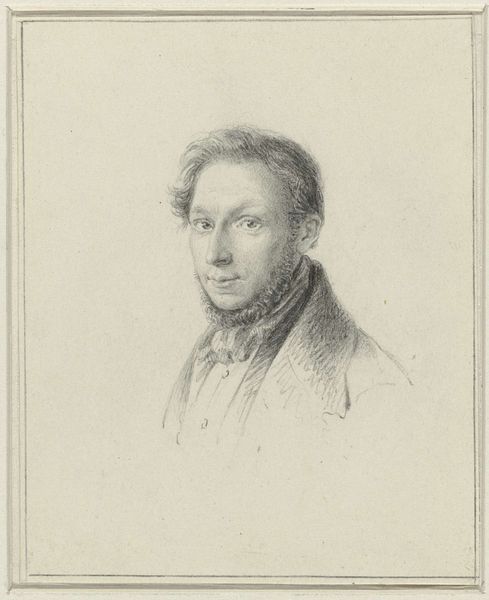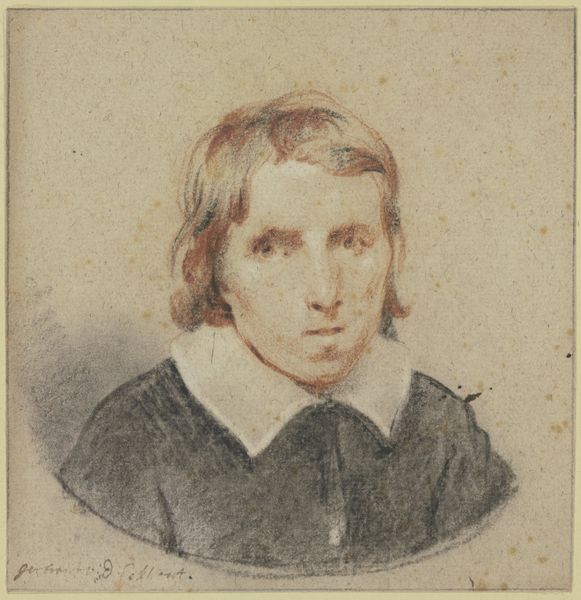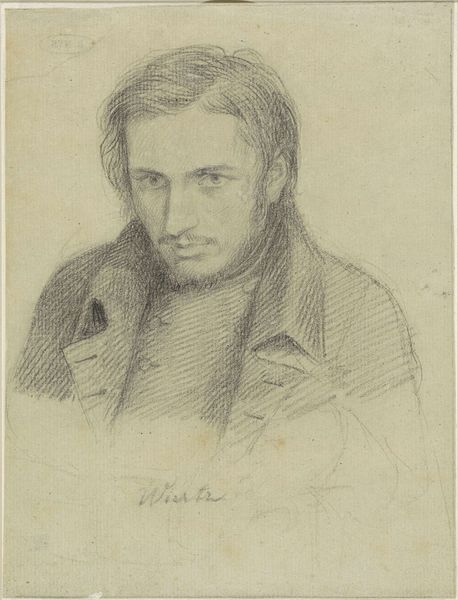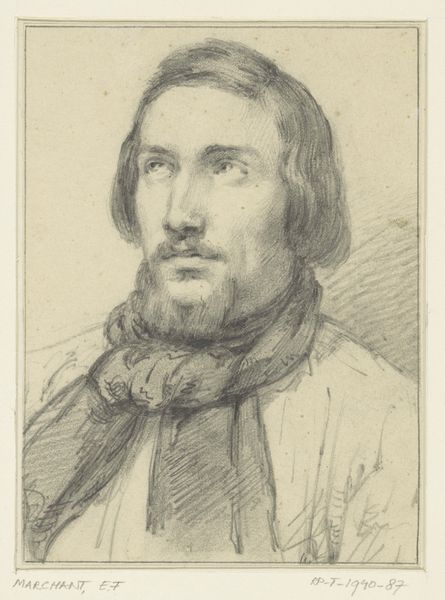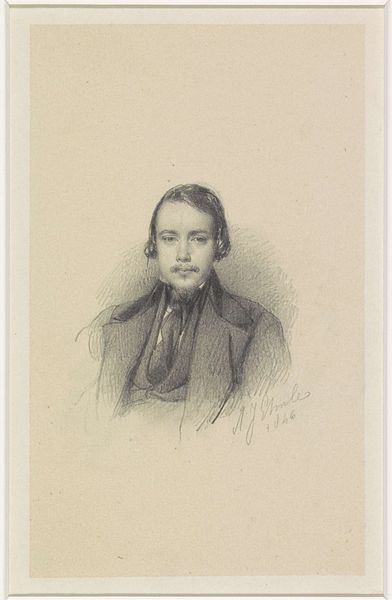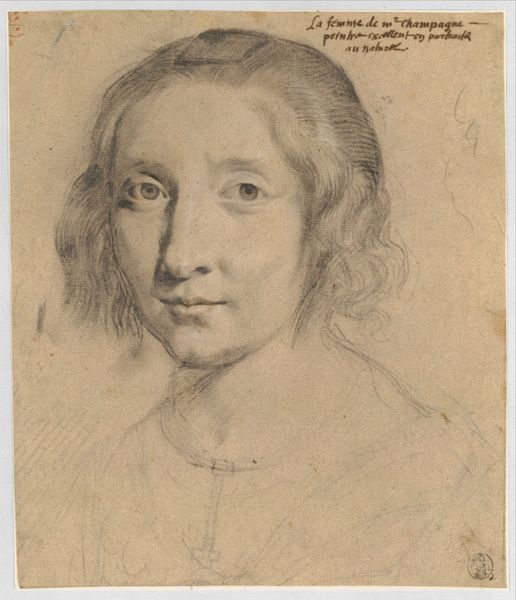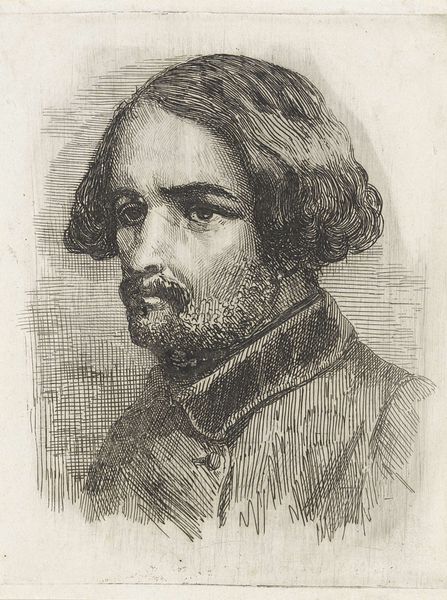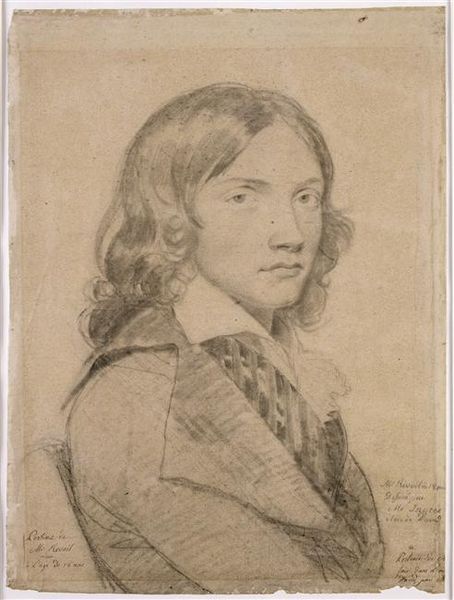
drawing, pencil
#
pencil drawn
#
drawing
#
pencil sketch
#
charcoal drawing
#
pencil drawing
#
pencil
#
portrait drawing
#
pencil work
#
academic-art
#
realism
Dimensions: height 135 mm, width 99 mm
Copyright: Rijks Museum: Open Domain
Curator: Here we have a drawing attributed to Arnoud Schaepkens, believed to have been created sometime between 1831 and 1904. It's a bust portrait of a young man, rendered with what appears to be pencil on paper. Editor: The delicacy is striking. It almost has the ephemeral quality of a memory, the way the lines fade in and out, focusing our attention primarily on his face and gaze. Curator: Indeed. The realism exhibited in the face—especially the meticulous detailing of his hair and the subtle shading—is characteristic of the academic art traditions prevalent at the time. I'm struck by how it aligns with the era's increasing emphasis on individuality and psychological depth in portraiture. Editor: I see that academic influence, and it prompts me to wonder about the subject's positionality. Who was he? The careful depiction suggests a certain level of importance afforded to the sitter, or perhaps the artist sought to elevate him. Curator: That's a vital question. Schaepkens moved within fairly academic circles and had relationships with the art community. A work like this helps flesh out the complex visual economies operating at this time and it provides clues about how individuals fashioned themselves and were fashioned by society. Editor: And how portraiture itself served as a tool for social mobility and representation. Did the rise of the bourgeoisie democratize the genre, or did it simply replicate existing power structures in new forms? This piece, despite its intimate scale, seems to point toward those bigger, unavoidable questions. It speaks about how class and perhaps masculinity are displayed and preserved through this kind of representation. Curator: I agree. The understated presentation, the academic realism – these elements are far from neutral. They perform specific cultural work. But ultimately, while questions of social power swirl around this image, it offers a moment of individual focus as well. Editor: And perhaps inspires our contemporary perspective toward considering representation itself as both revealing and obscuring the past and its people. Curator: Absolutely. It becomes part of an ongoing visual narrative, continuously reshaped by how we look back and understand its meanings.
Comments
No comments
Be the first to comment and join the conversation on the ultimate creative platform.
